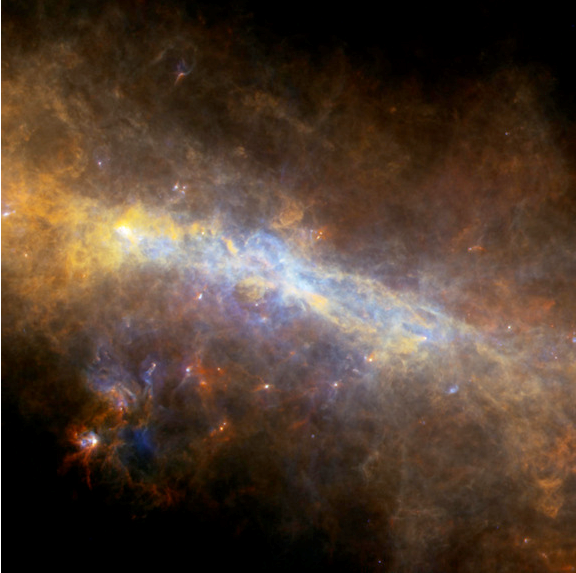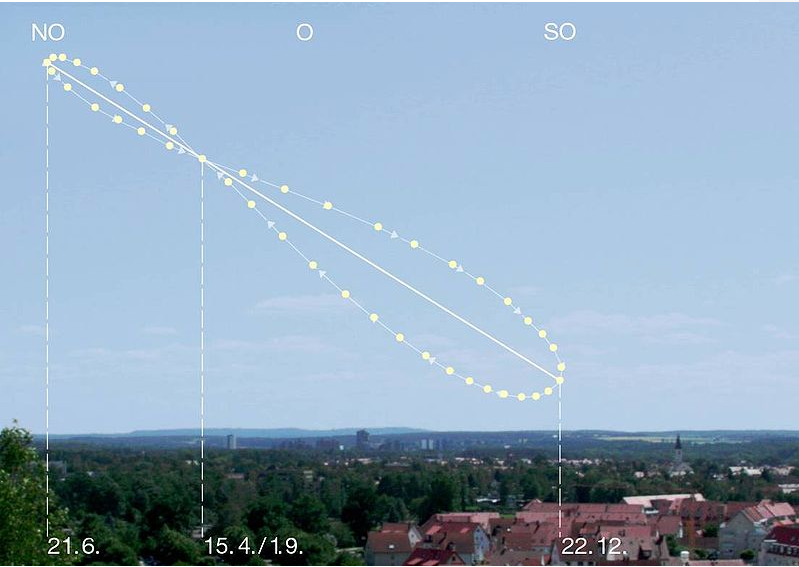by Marilyn Muir, LPMAFA

This work is licensed under a Creative Commons Attribution-NonCommercial-ShareAlike 4.0 International License.
I received the current e-news from Space.com last week with a headline that grabbed my immediate attention, an article titled “‘Infinity Symbol’ Found at Center of Milky Way”. I opened the page and was faced with an awesome new photo of the center of our Milky Way Galaxy and the photo gave me chills! There it was, just gorgeous and bigger than life. Was this truly the cosmic lemniscate at the center of our galaxy? This shows the life-giving stew of energy that makes up a stellar nursery, the place where stars are born. The picture was of a twisted ring of stellar gases that reminded me of a similar shape in a previous astronomy article.

| CREDIT: ESA/NASA/JPL-Caltech |
Just what is the cosmic lemniscate? It is the symbol for Infinity whose meaning stems from lemniscus (Latin), which basically means ribbon, suggesting the shape of the symbol. Infinity itself has multiple meanings depending on both application and scale. And for those of us who study symbolism, infinity has many definitions. It is both ultimate time and timelessness, or perhaps time on a cosmic or universal scale, or beyond time. A common variation of the lemniscate is the ouroboros, the ancient symbol of the snake swallowing its tail. The circle with a single twist causes that circle to cross over itself somewhere toward the middle and presents itself as a horizontal figure eight. I just knew I had this pattern in my astronomy file.*
The Analemma of the Sun/Earth relationship
While it is scientifically true that the Earth orbits the Sun, we tend to look at the Sun/Earth relationship from our Earthly perspective. Sunrise occurs on the eastern horizon of wherever you are on the globe. During the year, the sunrise moves from due east at the spring equinox, slowly moving north for the summer solstice, tracing its path backwards to due east at the autumnal equinox, then slowly moving south for the winter solstice, again tracing its path backwards to due east for the next spring equinox. The sunrise path described is not exactly circular. It is an elongated loop with that same type of twist shown in the galactic picture suggesting the lemniscate. The loop does have two halves, but those halves are not equal. One side is substantially longer than the other. (•see Wikipedia article). This lemniscate is a diagram of the travel of our Sunrise throughout one year. Think of the diagram like time-lapse photography, with 365 ¼ days of the relationship of sunrise and Earth’s orbit condensed into a still shot. If you look at the shape of that motion, the Sun positions for a year emulate the cosmic lemniscate at the center of our galaxy. As above, so below, this time in galactic proportions.

CREDIT: Wikipedia
The ancients infrequently get credit for their knowledge and symbolism. Much of those beliefs are dismissed as “old wives tales” and deemed unimportant by us moderns. The ancients saw, they observed and knew, and they interpreted. Just because we do not understand how the ancients saw, knew and interpreted does not diminish the value or validity of their symbolism. Have you noticed? We moderns are not always as smart as we think we are. This particular correlation should not be missed. Think of Stonehenge and the incredible astronomy it shows. The ancients described a symbol… the lemniscate, and gave it a meaning… Infinity. These examples show that the ancients actually saw this shape in the sky and recorded it. It was not superstition, it was their reality. Then they went on to establish meaning. The shape has no discernable beginning or ending. It is beginningless… endless… timeless… and beyond time… Infinity.
* http://www.space.com/12438-weird-twisted-ring-milky-center.html
** http://en.wikipedia.org/wiki/Analemma
First published on All Things Healing website Aug 2011, republished with slight editing.

This work is licensed under a Creative Commons Attribution-NonCommercial-ShareAlike 4.0 International License.